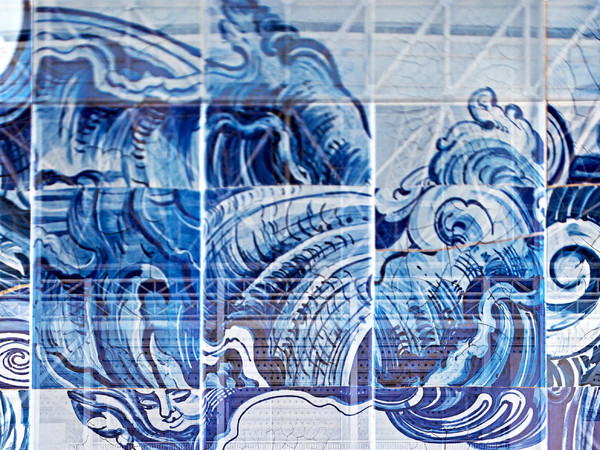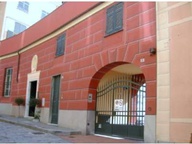Adriana Varejão. Azulejos
Dal 1 October 2016 al 10 December 2016
Roma
Luogo: Gagosian Gallery
Indirizzo: Via Francesco Crispi 16
Telefono per informazioni: +39 06 42086498
E-Mail info: roma@gagosian.com
Sito ufficiale: http://www.gagosian.com
Nel Barocco il bello e il grottesco convivono sempre come opposti: è un’estetica che ha a che fare con i contrasti.
Adriana Varejão
Gagosian Roma è lieta di annunciare una mostra di nuovi e recenti lavori di Adriana Varejão.

Tra gli artisti brasiliani più rinomati, Varejão è molto nota per la sua riflessione incisiva sulla storia e la cultura del Brasile, ricche e allo stesso tempo conflittuali, come rappresentato nella serie dei suoi dipinti “maiolica” iniziata nel 1988. Queste opere particolarmente creative simulano gli azulejos ovvero le maioliche dipinte che, attraverso complesse vicissitudini legate al commercio e alla colonizzazione, congiungono il Brasile con il Portogallo. L’azulejo, una mattonella in terracotta quadrata, è il mezzo decorativo maggiormente impiegato nell’arte nazionale portoghese fin dal Medio Evo. Tradizionalmente i grandi e teatrali motivi degli azulejos venivano usati per decorare gli edifici sia religiosi che secolari, omogeneizzando così l’architettura in un’unica illusione pittorica.
L’azulejo ha costantemente rinnovato la sua forza nei secoli, riflettendo l’eclettismo naturale di una cultura espansiva ed aperta al dialogo. La tecnica, che si avvaleva delle lezioni degli artigiani Moreschi ispirati alle ceramiche di Siviglia e Valencia, si adattò in seguito alle formule ornamentali del Rinascimento italiano per arrivare a includere anche l’esotismo della Cina orientale. Dopo un breve periodo di ispirazione olandese, subentrarono narrazioni figurative fantastiche in bianco e blu, a dimostrazione della perfetta assimilazione di diversi elementi, e diffuse in luoghi dell’impero portoghese molto distanti tra loro come per esempio il Brasile. Il costante richiamo all’azulejo nell’arte di Varejão è una metafora del mescolarsi delle culture, sia volontario che violento.
Le grandi maioliche dell'artista sono realizzate in gesso e pittura a olio su tela. Uno strato generoso di gesso è applicato sul fondo delle tele e poi lasciato ad asciugare. Durante il processo di essiccazione, iniziano ad apparire delle crepe che, come nate da un fenomeno geologico naturale, rendono ogni superficie unica ed irripetibile. Nell’arco di vent’anni questi dipinti squadrati hanno mantenuto la loro dimensione, talvolta andando a creare dei lavori monumentali come Celacanto provoca maremoto (2004 - 2008), ora ospitato in uno spazio apposito a Inhotim, lo spettacolare parco museo di arte contemporanea nello Stato brasiliano di Minas Gerais. In questo lavoro le scritte sulla storia, la cultura, il paesaggio, la geografia e il corpo umano, che popolavano i primi dipinti di Varejão, sono incorporati in un delirio torbido di motivi blu e bianchi e di immagini frammentarie, rappresentate in una struttura a griglia a simulare un’enorme parete di maioliche. I lavori in mostra a Roma pensati appositamente per l'occasione, sono i più grandi dipinti-maiolica che Varejão abbia prodotto finora (180 cm quadrati). I motivi, quali una testa d'angelo, una colonna dorica, una rosa o una conchiglia, sono resi in sfumature leggere di blu e bianco a seconda dei singoli riferimenti storici e ingranditi fino al punto in cui iniziano a dissolversi in opulenti gesti astratti.
Seguendo un altro tema del lavoro di Varejão, vicino alle caratteristiche illusorie del Barocco italiano, una singola scultura totemica appare free-standing, come un frammento architettonico maiolicato nel quale, da una sezione trasversale, si intravedono scioccanti viscere insanguinate in un livido trompe l'oeil.
In occasione della mostra, Varejão è stata invitata a presentare Transbarroco (2014), la sua unica installazione-video multi- canale all’Accademia di Francia a Roma, Villa Medici, all’interno di Art Club, un progetto a cura di Pier Paolo Pancotto e parte di un'ampia iniziativa culturale intitolata "I giovedì della Villa - Questions d’art”. Questo magnifico lavoro, con larghe inquadrature di interni spettacolari delle chiese barocche di Minas Gerais e Bahia in Brasile e il palpitante audio del rituale candomblé intervallato da letture di scritti-chiave per l’identità brasiliana, viene esposto per la prima volta fuori dal Brasile. Il Barocco profondamente ibrido che il video riflette trova il giusto contrappunto nel contesto del cuore di Roma.
Adriana Varejão è nata nel 1964 a Rio de Janeiro, Brasile, dove vive e lavora. Le sue opere si trovano nelle più importanti collezioni museali, tra le quali: Metropolitan Museum of Art, New York; Solomon R. Guggenheim Museum, New York; il Museum of Contemporary Art San Diego; Tate Modern, Londra; Fondation Cartier pour l’art contemporain, Parigi; Fundación “la Caixa,” Barcellona; Stedelijk Museum, Amsterdam; e Hara Museum, Tokyo. Tra le mostre personali in spazi istituzionali si annoverano “Azulejões”, Centro Cultural Banco do Brasil, Rio de Janeiro e Brasilia, Brasile (2001); “Chambre d’échos / Câmara de ecos”, Fondation Cartier pour l ́art Contemporain, Parigi (2005, e poi al Centro Cultural de Belém a Lisbona e DA2 a Salamanca, Spagna); Hara Museum of Contemporary Art, Tokyo (2007); “Adriana Varejão - Histórias às Margens”, Museu de Arte Moderna de São Paulo, Brasile (2012, e poi al Museu de Arte Moderna do Rio de Janeiro, Brasile e al Museo de Arte Latinoamericano de Buenos Aires, MALBA, Argentina nel 2013); “Adriana Varejão”, The Institute of Contemporary Art, Boston (2014); e “Adriana Varejão: Kindred Spirits”, Dallas Contemporary (2015). Varejão ha partecipato alle seguenti Biennali: Bienal de São Paulo (1994 e 1998); Biennale of Sydney (2001); SITE Santa Fe (2004); Mercosul Biennial in Visual Art, Brasile (1997, 2005 e 2015); Istanbul Biennial (2011); Bienal de Bucareste, Romania (2008); Liverpool Biennial (1999 e 2006); “30x Bienal,” Fundação Bienal di San Paolo (2013); Bienal de Arte de Contemporânea de Coimbra, Portogallo (2015). Nel 2008 è stata inaugurata la Galeria Adriana Varejão, un padiglione dedicato all'arte dell'artista, progettato da Rodrigo Cerviño Lopez, a Inhotim Centro de Arte Contemporânea, Brumadinho, Minas Gerais, Brasile. All'inizio del 2016 le è stato commissionato un murale temporaneo per l'intera facciata del Centro Aquatico in occasione delle Olimpiadi del 2016 a Rio de Janeiro.
L’installazione video Transbarroco di Varejão sarà in mostra all’Accademia di Francia a Roma, Villa Medici da giovedì 29 settembre al 2 ottobre. Il programma settimanale “I giovedì della Villa - Questions d’art” è un’iniziativa di Villa Medici che mira a riflettere sullo stato della creatività contemporanea - arti visive, cinema, musica, teatro, letteratura e storia - attraverso le interazioni tra i diversi pubblici e i vari linguaggi che includono letture, concerti, performance, mostre e installazioni. Creata da Luigi XIV nel 1666, l’Accademia di Francia a Roma è un’istituzione pubblica francese con tre obiettivi statutari: il supporto agli artisti e ai ricercatori attraverso residenze; attivi scambi culturali ed artistici, e la conservazione e valorizzazione di Villa Medici.
Vedi anche:
• FOTO: Sinfonie in blu. Gli azulejos di Adriana Varejão • Adriana Varejão
Adriana Varejão
Gagosian Roma è lieta di annunciare una mostra di nuovi e recenti lavori di Adriana Varejão.

Tra gli artisti brasiliani più rinomati, Varejão è molto nota per la sua riflessione incisiva sulla storia e la cultura del Brasile, ricche e allo stesso tempo conflittuali, come rappresentato nella serie dei suoi dipinti “maiolica” iniziata nel 1988. Queste opere particolarmente creative simulano gli azulejos ovvero le maioliche dipinte che, attraverso complesse vicissitudini legate al commercio e alla colonizzazione, congiungono il Brasile con il Portogallo. L’azulejo, una mattonella in terracotta quadrata, è il mezzo decorativo maggiormente impiegato nell’arte nazionale portoghese fin dal Medio Evo. Tradizionalmente i grandi e teatrali motivi degli azulejos venivano usati per decorare gli edifici sia religiosi che secolari, omogeneizzando così l’architettura in un’unica illusione pittorica.
L’azulejo ha costantemente rinnovato la sua forza nei secoli, riflettendo l’eclettismo naturale di una cultura espansiva ed aperta al dialogo. La tecnica, che si avvaleva delle lezioni degli artigiani Moreschi ispirati alle ceramiche di Siviglia e Valencia, si adattò in seguito alle formule ornamentali del Rinascimento italiano per arrivare a includere anche l’esotismo della Cina orientale. Dopo un breve periodo di ispirazione olandese, subentrarono narrazioni figurative fantastiche in bianco e blu, a dimostrazione della perfetta assimilazione di diversi elementi, e diffuse in luoghi dell’impero portoghese molto distanti tra loro come per esempio il Brasile. Il costante richiamo all’azulejo nell’arte di Varejão è una metafora del mescolarsi delle culture, sia volontario che violento.
Le grandi maioliche dell'artista sono realizzate in gesso e pittura a olio su tela. Uno strato generoso di gesso è applicato sul fondo delle tele e poi lasciato ad asciugare. Durante il processo di essiccazione, iniziano ad apparire delle crepe che, come nate da un fenomeno geologico naturale, rendono ogni superficie unica ed irripetibile. Nell’arco di vent’anni questi dipinti squadrati hanno mantenuto la loro dimensione, talvolta andando a creare dei lavori monumentali come Celacanto provoca maremoto (2004 - 2008), ora ospitato in uno spazio apposito a Inhotim, lo spettacolare parco museo di arte contemporanea nello Stato brasiliano di Minas Gerais. In questo lavoro le scritte sulla storia, la cultura, il paesaggio, la geografia e il corpo umano, che popolavano i primi dipinti di Varejão, sono incorporati in un delirio torbido di motivi blu e bianchi e di immagini frammentarie, rappresentate in una struttura a griglia a simulare un’enorme parete di maioliche. I lavori in mostra a Roma pensati appositamente per l'occasione, sono i più grandi dipinti-maiolica che Varejão abbia prodotto finora (180 cm quadrati). I motivi, quali una testa d'angelo, una colonna dorica, una rosa o una conchiglia, sono resi in sfumature leggere di blu e bianco a seconda dei singoli riferimenti storici e ingranditi fino al punto in cui iniziano a dissolversi in opulenti gesti astratti.
Seguendo un altro tema del lavoro di Varejão, vicino alle caratteristiche illusorie del Barocco italiano, una singola scultura totemica appare free-standing, come un frammento architettonico maiolicato nel quale, da una sezione trasversale, si intravedono scioccanti viscere insanguinate in un livido trompe l'oeil.
In occasione della mostra, Varejão è stata invitata a presentare Transbarroco (2014), la sua unica installazione-video multi- canale all’Accademia di Francia a Roma, Villa Medici, all’interno di Art Club, un progetto a cura di Pier Paolo Pancotto e parte di un'ampia iniziativa culturale intitolata "I giovedì della Villa - Questions d’art”. Questo magnifico lavoro, con larghe inquadrature di interni spettacolari delle chiese barocche di Minas Gerais e Bahia in Brasile e il palpitante audio del rituale candomblé intervallato da letture di scritti-chiave per l’identità brasiliana, viene esposto per la prima volta fuori dal Brasile. Il Barocco profondamente ibrido che il video riflette trova il giusto contrappunto nel contesto del cuore di Roma.
Adriana Varejão è nata nel 1964 a Rio de Janeiro, Brasile, dove vive e lavora. Le sue opere si trovano nelle più importanti collezioni museali, tra le quali: Metropolitan Museum of Art, New York; Solomon R. Guggenheim Museum, New York; il Museum of Contemporary Art San Diego; Tate Modern, Londra; Fondation Cartier pour l’art contemporain, Parigi; Fundación “la Caixa,” Barcellona; Stedelijk Museum, Amsterdam; e Hara Museum, Tokyo. Tra le mostre personali in spazi istituzionali si annoverano “Azulejões”, Centro Cultural Banco do Brasil, Rio de Janeiro e Brasilia, Brasile (2001); “Chambre d’échos / Câmara de ecos”, Fondation Cartier pour l ́art Contemporain, Parigi (2005, e poi al Centro Cultural de Belém a Lisbona e DA2 a Salamanca, Spagna); Hara Museum of Contemporary Art, Tokyo (2007); “Adriana Varejão - Histórias às Margens”, Museu de Arte Moderna de São Paulo, Brasile (2012, e poi al Museu de Arte Moderna do Rio de Janeiro, Brasile e al Museo de Arte Latinoamericano de Buenos Aires, MALBA, Argentina nel 2013); “Adriana Varejão”, The Institute of Contemporary Art, Boston (2014); e “Adriana Varejão: Kindred Spirits”, Dallas Contemporary (2015). Varejão ha partecipato alle seguenti Biennali: Bienal de São Paulo (1994 e 1998); Biennale of Sydney (2001); SITE Santa Fe (2004); Mercosul Biennial in Visual Art, Brasile (1997, 2005 e 2015); Istanbul Biennial (2011); Bienal de Bucareste, Romania (2008); Liverpool Biennial (1999 e 2006); “30x Bienal,” Fundação Bienal di San Paolo (2013); Bienal de Arte de Contemporânea de Coimbra, Portogallo (2015). Nel 2008 è stata inaugurata la Galeria Adriana Varejão, un padiglione dedicato all'arte dell'artista, progettato da Rodrigo Cerviño Lopez, a Inhotim Centro de Arte Contemporânea, Brumadinho, Minas Gerais, Brasile. All'inizio del 2016 le è stato commissionato un murale temporaneo per l'intera facciata del Centro Aquatico in occasione delle Olimpiadi del 2016 a Rio de Janeiro.
L’installazione video Transbarroco di Varejão sarà in mostra all’Accademia di Francia a Roma, Villa Medici da giovedì 29 settembre al 2 ottobre. Il programma settimanale “I giovedì della Villa - Questions d’art” è un’iniziativa di Villa Medici che mira a riflettere sullo stato della creatività contemporanea - arti visive, cinema, musica, teatro, letteratura e storia - attraverso le interazioni tra i diversi pubblici e i vari linguaggi che includono letture, concerti, performance, mostre e installazioni. Creata da Luigi XIV nel 1666, l’Accademia di Francia a Roma è un’istituzione pubblica francese con tre obiettivi statutari: il supporto agli artisti e ai ricercatori attraverso residenze; attivi scambi culturali ed artistici, e la conservazione e valorizzazione di Villa Medici.
Vedi anche:
• FOTO: Sinfonie in blu. Gli azulejos di Adriana Varejão • Adriana Varejão
SCARICA IL COMUNICATO IN PDF
COMMENTI

-
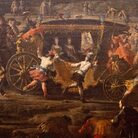 Dal 20 December 2025 al 20 April 2026
Caserta | Reggia di Caserta
Dal 20 December 2025 al 20 April 2026
Caserta | Reggia di Caserta
Regine: trame di cultura e diplomazia tra Napoli e l’Europa
-
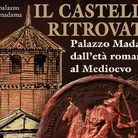 Dal 19 December 2025 al 23 March 2026
Torino | Palazzo Madama - Museo Civico d’Arte Antica
Dal 19 December 2025 al 23 March 2026
Torino | Palazzo Madama - Museo Civico d’Arte Antica
Il castello ritrovato. Palazzo Madama dall’età romana al medioevo
-
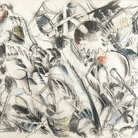 Dal 17 December 2025 al 19 January 2026
Roma | Palazzo della Cancelleria
Dal 17 December 2025 al 19 January 2026
Roma | Palazzo della Cancelleria
De Humana Mensura di Linda Karshan
-
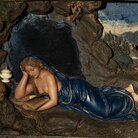 Dal 18 December 2025 al 12 April 2026
Firenze | Gallerie degli Uffizi
Dal 18 December 2025 al 12 April 2026
Firenze | Gallerie degli Uffizi
Cera una volta. Sculture dalle collezioni medicee
-
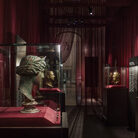 Dal 11 December 2025 al 9 April 2026
Firenze | Museo Archeologico Nazionale di Firenze
Dal 11 December 2025 al 9 April 2026
Firenze | Museo Archeologico Nazionale di Firenze
Icone di Potere e Bellezza
-
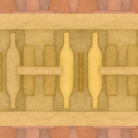 Dal 11 December 2025 al 11 January 2026
Roma | Palazzo Esposizioni Roma
Dal 11 December 2025 al 11 January 2026
Roma | Palazzo Esposizioni Roma
Giorgio Morandi nella Collezione Eni. Un viaggio attraverso la storia culturale del cane a sei zampe e l’eredità di Enrico Mattei
